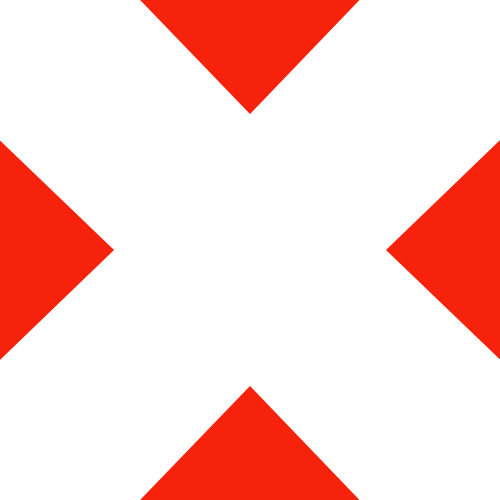
Chamfering knife: Master of detail in machining
In the fine field of machining, although the chamfer knife is not as eye-catching as some large processing equipment, it plays an indispensable role in the detail processing of the workpiece. Today, let's walk into the world of chamfering knives and explore its unique charm and important value in machining.
1, the main use of chamfering knife
The chamfer knife, as its name indicates, is mainly used to process chamfers at the edge or orifice of the workpiece, that is, to create a bevel. This seemingly simple operation contains many important values.
Removing sharp edges is the first task of a chamfer knife. In the machining process, the edge of the workpiece often produces sharp corners because of cutting, stamping and other processes. These sharp edges are not only easy to scratch the operator, but may also cause damage to other parts during assembly or use. The chamfering knife removes these sharp edges through precise cutting, making the edges of the workpiece smoother and safer.
Improving the aesthetics is another important role of the chamfering knife. In many mechanical products, the degree of beauty of appearance directly affects the market competitiveness of the product. After the edge of the workpiece processed by the chamfering knife, the lines are more smooth, and the overall appearance is more exquisite and delicate, thus improving the grade and market value of the product.
It is easy to assemble, which is the practical value of chamfering knife in machining. During mechanical assembly, chamfering reduces friction between parts, making parts easier to align and install. This not only improves assembly efficiency, but also reduces the risk of errors and damage that may occur during assembly.
Improving stress distribution is a positive effect of chamfering knives on mechanical properties. In mechanical parts, stress concentration is often one of the main causes of part failure. By processing the chamfer, the chamfer knife can effectively reduce the stress concentration, thereby improving the mechanical properties and service life of the workpiece.
2, the chamfer knife structural characteristics
The structural design of the chamfer knife, although seemingly simple, contains clever wisdom.
The cutter body is usually made of high-strength steel or other alloy materials. This material was chosen to provide the tool with solid support and sufficient rigidity to cope with pressure and impact under a variety of machining conditions.
The blade is the key part of a chamfered knife. The blade part is designed to a specific Angle, common 45°, 30° and 60° and other angles to meet different chamfer needs. The selection of these angles is determined according to the specific requirements of the workpiece and the processing technology to ensure the accuracy and consistency of the chamfer.
Chamfered knives are usually available in single or double blade designs. Single blade chamfering knife is suitable for single direction chamfering processing, simple operation, suitable for the chamfering direction has a clear requirement occasions. The double-edge chamfer knife can process the chamfer in both directions at the same time, which greatly improves the processing efficiency, especially when it is necessary to chamfer multiple edges of the workpiece, the advantage is more obvious.
The coolant channel is the characteristic design of some advanced chamfering knives. Through the internal coolant channel, the coolant can be transported directly to the cutting area, thus improving the cooling effect. This not only helps to reduce the cutting temperature and extend the tool life, but also improves the machining quality and efficiency.
3, the type of chamfering knife
According to different processing needs and application scenarios, chamfering knives can be divided into many types, each with its own characteristics.
Single blade chamfer knife, only one cutting edge, suitable for single direction chamfer machining. Its structure is simple, easy to operate, suitable for occasions where the direction of the chamfer is clearly required, such as chamfering on one side of the workpiece edge.
Double-edged chamfer knife, with two cutting edges, can be processed in two directions at the same time. This design greatly improves the processing efficiency, especially when multiple edges of the workpiece need to be chamfered, it can significantly shorten the processing time and improve production efficiency.
Inner hole chamfering knife, specially used to process the chamfering of the hole. In order to be able to penetrate deep into the hole for processing, the inner hole chamfer knife is usually designed to be a slender shape. This design allows it to operate flexibly in small Spaces, ensuring accurate chamfering of the orifges.
Outer edge chamfering knife, used to process the edge of the workpiece chamfering. In order to facilitate operation on the workpiece surface, the outer edge chamfer knife is usually designed to be flat. This design allows it to closely fit the workpiece surface, perform accurate chamfering, and improve the finish and beauty of the workpiece edge.

4, the use of chamfering knife precautions
Choosing the right chamfering knife is the premise to ensure the processing effect. In the selection, it is necessary to consider the hardness of the processed material, the required chamfer Angle and the processing conditions. For example, for materials with higher hardness, tool materials with higher hardness and better wear resistance should be selected; For machining that requires a larger chamfer Angle, the blade design with the corresponding Angle should be selected.
The correct installation is the key to ensure the normal operation of the chamfer knife. During installation, ensure that the chamfer knife is firmly installed and the concentricity with the machine spindle is good. This not only helps to improve machining accuracy, but also extends the service life of the tool.
Cooling lubrication plays an important role in chamfering. The use of appropriate coolant can effectively reduce tool wear and improve machining quality and tool life. The choice of coolant should be determined according to the processing material and tool material to ensure the best cooling effect.
The selection of cutting parameters has a direct impact on the quality and efficiency of chamfering. Choosing the right cutting speed, feed rate and cutting depth is very important. In general, the cutting speed should be determined according to the tool material and workpiece material; The feed rate should be adjusted according to the cutting edge and machining requirements; The cutting depth should be selected according to the workpiece allowance and the rigidity of the tool.
Safety measures are an important part of chamfering process. During processing, the operator must take necessary safety measures, such as wearing protective glasses, gloves, etc., to prevent accidental injury. At the same time, ensure that the work area is clean and tidy to avoid safety hazards caused by debris accumulation.
5. Application scenario of chamfering knife
In the field of machinery manufacturing, chamfering knives are widely used in the processing of various mechanical parts. Whether it is a large machine tool part or a small precision part, the chamfer knife can play its unique value. By chamfering the edge or hole of the workpiece, the sharp edge can be effectively removed, improving the safety and beauty of the part, and also helping the subsequent assembly and processing.
In the mold manufacturing, the role of the chamfer knife is irreplaceable. The precision and surface quality of the die directly affect the quality of the workpiece. The use of chamfer knife to finish the chamfer in the mold can ensure the surface quality and safety of the mold, improve the service life of the mold and the accuracy of the parts.
In the aerospace field, the precision and quality of parts are very high. Chamfering knives are used in the manufacture of aerospace parts to process chamfers that require high precision and high surface quality. The precise processing of the chamfer can ensure the reliability and durability of the parts under complex working conditions, and provide guarantee for the safe operation of aerospace equipment.
In the field of precision engineering, the chamfer knife is a great skill. In precision engineering where high precision chamfering is required, chamfering knives can provide the high precision and surface quality required. Through the fine processing of the chamfer, it can meet the demanding requirements of precision instruments, optical equipment and other parts accuracy and surface quality, and ensure the high performance and high reliability of the equipment.
In the field of automotive manufacturing, chamfering knives also play an important role. In the manufacture of automotive parts, chamfering knives are used for machining workpiece edges or openings where sharp edges need to be removed. By processing the chamfer, the safety and assembly efficiency of the parts can be improved, the production cost can be reduced, and the quality and performance of the whole vehicle can be improved.
In short, although the chamfering knife seems insignificant in the field of machining, it plays a crucial role in the detail processing of the workpiece. Through the reasonable selection and correct use of the chamfering knife, the quality, safety and aesthetics of the workpiece can be effectively improved, and it contributes its own unique strength to the high-quality development of the machining industry.



